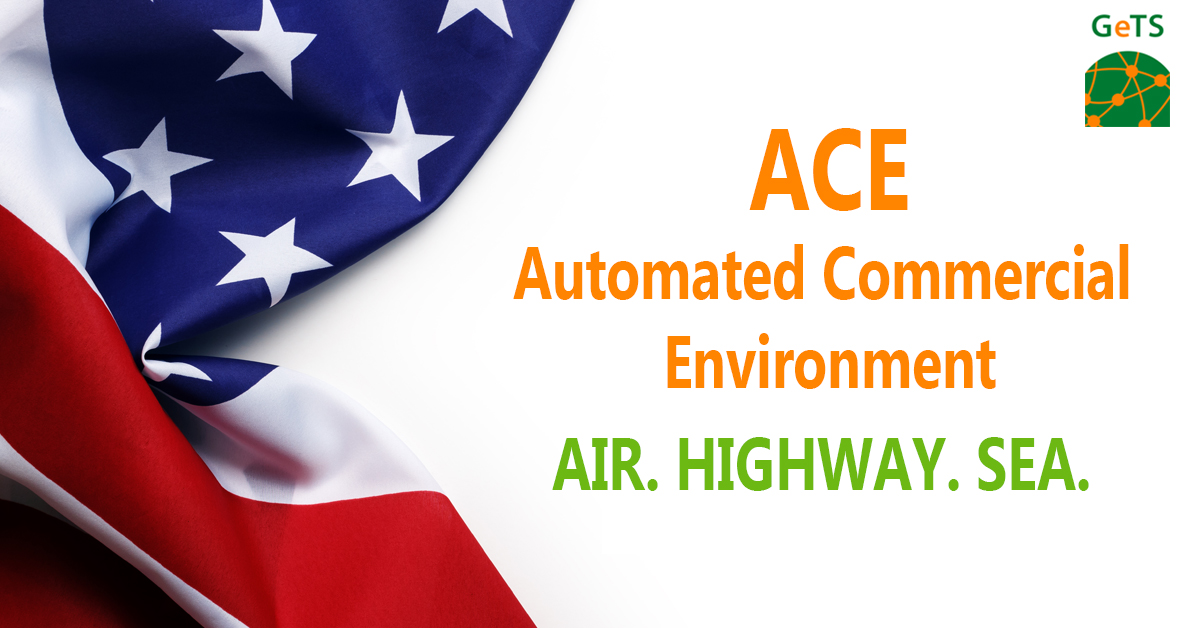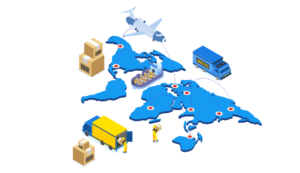ACE eManifest requirements for U.S. (CBP) introduce electronic filing of cargo and conveyance information via the Automated Commercial Environment (ACE), CBP’s Single Window for transactions between the government and trading community. For CBP officers, the eManifest program provides consolidated information for better risk assessment and facilitation of legitimate trade while securing the country’s borders and protecting its citizens.
ACE eManifest requirements apply to carriers in all modes of transport (highway/truck, rail, ocean, and air). In highway mode, carriers are required to submit eManifests to CBP at least an hour before the truck’s arrival at a land border crossing. The truck eManifest requirement greatly streamlines the cargo release process, helps carriers save time at the border, and improves visibility through online status tracking of trips and shipments.
ACE EMANIFEST FILING OPTIONS
EDI

EDI is a method of direct data exchange between two computer systems. Messages are encoded in two main programming standards: ANSI X12 and UN EDIFACT. Clients may build an interface to ACE via EDI or have their software provider provide an interface to ACE via EDI. A CBP-approved third party service provider can also file eManifests and other CBP transactions on client’s behalf.
- Third party software: Carriers can use software provided by a CBP-approved IT vendor. Many vendors allow integration of their applications with the client’s software or systems for seamless processing.
- Service provider filing: Carriers can use a third party service provider to transmit eManifest data on their behalf for a fee. The service provider’s software has been tested and approved by CBP.
- Self-developed EDI interface: Carriers can develop their own software to connect to CBP via ACE. The software must be tested by CBP. Carriers who plan to establish EDI connectivity in-house must mail or fax a letter of intent on company letterhead to CBP.
ACE Secure Data Portal
The ACE Portal is a web-based data transmission option for low-volume filers. The ACE Portal is easily accessible via the Internet and is free to use for all Portal account users. Filers must key in data manually and prepare one eManifest at a time.
Another option is to use an ACE eManifest service provider. A third party service provider to can also file eManifests on carrier’s behalf.
CBP urges carriers to have at least one back-up eManifest filing method in case their primary method of transmission goes down or becomes unavailable.
CREATING A TRUCK EMANIFEST
When creating a truck eManifest in the ACE Portal or EDI software, carriers must provide mandatory and conditional data elements about the trip, conveyance, crew, equipment, and shipment.
Trip
Required trip information includes the trip number, estimated date and time of arrival at the first port in the U.S., port code for first expected port in the U.S. (Schedule D number), and in-transit indicator.
Conveyance
Conveyance information can be uploaded or pulled from business software. If you have stored conveyance information in the ACE Portal, simply pull it up from the list by entering the ID number. Provide the VIN or serial number of the conveyance, the DOT number, license plate number, country of registration and state/province. If you have seals on the conveyance, enter the seal numbers.
If transporting hazardous materials, enter the company name of the insurance company, policy number, liability amount, and year of issuance. You can also report Instruments of International Traffic (IIT) such as engine racks if transported on the conveyance.
Crew
For FAST-approved drivers, provide the FAST proximity card number and country and state, if applicable. For non-fast drivers, provide the driver’s name and U.S. address. This can be delivery address to where the driver will deliver the shipment or where the driver will be at some point. You can also provide the driver’s date of birth, gender, and citizenship. Include information for passengers or people that are not considered crew members.
For travel documentation, enter the commercial driver’s license number, enhanced driver’s license indicator, country and state/province of issuance, and hazmat endorsement indicator if applicable. Also provide at least one of the following: SENTRI card, NEXUS card, passport number, visa number, permanent resident card number, U.S. alien registration, DHS refugee travel document number, enhanced tribal card/INAC card number, or U.S. merchant mariner document number.
Equipment
Equipment includes chassis, trailers, and containers. Carriers can key in equipment data or pull the data from existing software. Enter the equipment number that identifies the piece of equipment, country and state/province of registration, and license plate number. Report IITs that are used to transport engines across the border, including racks, lift vans, cargo vans, totes and shipping tanks.
Shipment
Carriers must select a shipment type when creating the eManifest. This will default to Pre-Arrival Processing System (PAPS) if you are using the ACE Portal. PAPS is the most common release option for commercial shipments entering the U.S. The customs broker must file the entry in the Automated Broker Interface (ABI) and the carrier must submit the eManifest to CBP at least one hour before arrival to obtain release.
Carriers must report a unique Shipment Control Number (SCN) and assign a unique PAPS number to the shipment. The PAPS number starts with the Standard Carrier Alpha Code (SCAC) followed by a unique identifier, which can be the carrier’s pro-bill number or the broker’s entry number. The PAPS number must be identical in the broker’s entry and the carrier’s eManifest.
Required data elements in the shipment section include shipper, consignee name, address, detailed description of the goods, lowest external packaging unit, gross weight, and quantity. Conditional information must also be provided if applicable. For example, if the truck is transporting dangerous goods, the carrier must provide the United Nations Dangerous Code (UNDG), and hazmat contact person and number.
After creating the eManifest, carriers can save the form to complete later or proceed to submit. Make sure to save the eManifest and check for errors. If there are no errors, the carrier can submit the eManifest and print the cover sheet. The driver must present the cover sheet to the border officer, who will stamp it as proof of report.
CrimsonLogic ACE EMANIFEST SOLUTIONS
CrimsonLogic is a CBP-approved service provider of leading ACE eManifest solutions for all modes of transport: ACE Highway, ACE Air and ACE Ocean. CrimsonLogic ACE solutions greatly simplify eManifest preparation and submission with comprehensive validation, template creation, bulk upload, multiple connectivity options, and 24/7 assistance on customs compliance matters. Carriers can create eManifests using the web-based application or integration option with existing businesses systems.
Visit our ACE eManifest page to learn more about ACE eManifest Requirements for U.S. (CBP).
Related Pages
ACE (Automated Commercial Environment)
Benefits that Enterprises Gain from Automated Commercial Environment US
What is SW – Single Window US?




